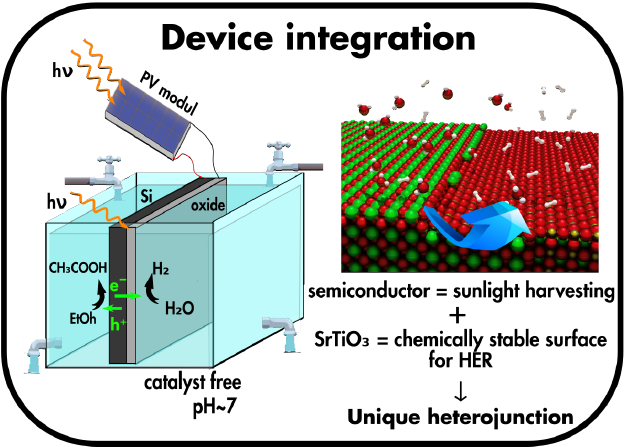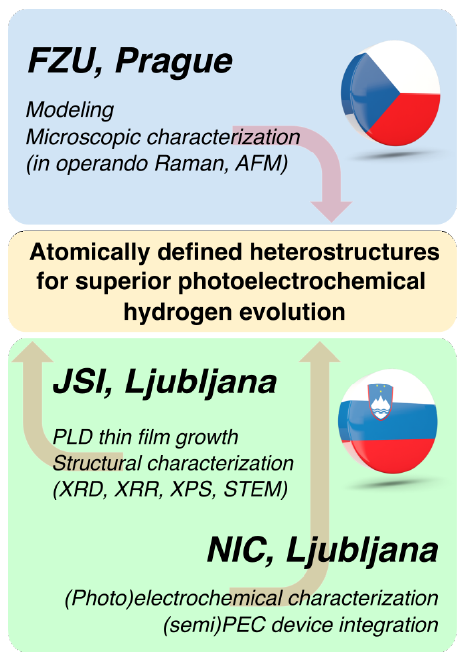
Theory and simulations
Due to their double-hysteresis loops and low losses, anti-ferroelectric (AFE) perovskites hold promise for storing a large amount of recoverable energy. However, only a few Pb-free AFE materials are known and these exhibit rather small recoverable energy due to moderate values of maximum polarization and breakdown field. Moreover, they show AFE behavior mainly as bulk ceramics. On the other hand, thin films are key to a high-throughput design approach and high flexibility for miniaturization. PFANDL will develop a theoretical toolkit and employ it for investigating and predicting the structure-property relationships in Pb-free AFE materials, both for bulk and thin films. The toolkit will include multi-scale modeling, from quantum to phenomenological methods. The simulations will be closely coordinated with cutting-edge material synthesis and characterization. A series of thin films will be produced using Pulsed-Laser Deposition, with different chemistry, thickness, clamping and strain. They will be analyzed by advanced microstructural and spectroscopic methods.
(hide abstract)The main aim of the present project is to analyze local tensorial properties of selected DWs (profiles of primary and secondary order parameters, strains, stresses, susceptibilities, etc.) and to disentangle the different mechanisms that contribute to their spatial dependencies. We will use a broad spectrum of theoretical methods (a novel symmetry approach, Landau-Ginzburg-Devonshire theory, effective medium approach) and simulation techniques (Phase-Field, ab-initio based machine learning, molecular dynamics, etc.) and experimental techniques (pyrocurrent-, SHG-, elasticity- measurements ), which solely are available through close collaboration between the two research groups (Department of Dielectrics, Institute of Physics of the Czech Academy of Sciences, CZ & Physics of Functional Materials, Faculty of Physics, University of Vienna, Austria) and the international collaboration partners.
(hide abstract)Modern dielectric materials with exceptional electromechanical response are based on perovskite solid solutions in the composition range of the morphotropic phase boundary (MPB). Despite their importance for applications, the explanation of their performance is elusive, as it is hard to access the real short-range atomic order experimentally and accurate calculations of finite-temperature properties with current models are challenging. We propose a comprehensive approach combining multiscale modeling and experiment. We engage first-principle techniques to design interatomic potentials fine-tuned for the atomic order in MPBs, which will be determined experimentally using the recently developed anomalous diffuse scattering method. Molecular-dynamics simulations of large enough structures will provide direct insight into the local structure-property relationship. Potentials for various cation species will enable to develop a high-throughput screening scheme and design of new, environmentally-friendly materials. The best candidates will be synthesized and characterized.
(hide abstract)Past projects:


Success of this strategy requires detailed knowledge of:
- the key parameters contributing to higher efficiency of H2 generation from PEC water splitting, such as defect concentrations and atomic structure of the interface,
- options to engineer band offsets using various dielectric POL materials,
- factors limiting solar-to-hydrogen (STH) efficiency of semi-PEC reactors made of these novel heterostructures.
- Department of Dielectrics , Institute of Physics of the Czech Academy of Sciences, Prague, Czech Republic
- Advanced Materials Department , Jožef Stefan Institute, Ljubljana, Slovenia
- Laboratory for Electrocatalysis , Department of Materials Chemistry, National Institute of Chemistry, Ljubljana, Slovenia
- PI in Slovenia: Asst. Prof. Matjaž Spreitzer, matjaz.spreitzer@ijs.si
- PI in Czech Republic: Dr. Jirí Hlinka, hlinka@fzu.cz
Domain walls in ferroelectrics are naturally formed 2D solitons with a defined, nm-thick polarization profile stable over macroscopic lateral dimensions. Strong coupling of the polarization gradient with strain drastically changes the material properties within the domain wall thickness. Increasing attention is paid to these mobile interfaces because the characterization tools have recently reached the desired nanoscale resolution, needed to uncover the rich spectrum of new phenomena expected there. We are convinced that some ferroelectrics can also host 1D analogues of domain walls, i.e. spontaneously formed ferroelectric line solitons, similar to the recently experimentally confirmed Bogdanov-Yablonskitype magnetic skyrmion lines. We wish to extend the explorations also to these interesting topological objects and to pave a path to the experimental discovery of the ferroelectric skyrmion phases, analogous to the vortex states in superconductors and skyrmion phases of chiral magnets.
(hide abstract)Quantum coherence in systems with electron correlations will be studied by means of Green functions, renormalized many-body theory, and numerical simulations. We will extend an approximation earlier developed by us with a two-particle self-consistency from the reduced parquet equations qualitatively correctly describing the Kondo strong-coupling limit of the metallic dot. The general theory will be applied to a model of quantum dot attached to superconducting leads with the aim to explain and understand its behavior at the transition from the spin singlet to the spin doublet state (zero-pi transition). The dot will be studied in an applied weak magnetic field in order to understand this transition and the properties of the spin doublet state with a degenerate ground state. The magnetic solution in a consistent theory must continuously match the non-magnetic one in the limit of the vanishing field. We further extend the static approximation from the reduced parquet equations to a dynamical one to make it applicable to low-dimensional lattice systems with long-range quantum coherence.
(hide abstract)We study quantum coherence induced by electron correlations in microscopic models of hybrid nano-scale and low-dimensional bulk superconductors. We will use both analytic methods and numerical simulations to achieve a better understanding of impurity quantum phase transitions and the zero-temperature superconductivity in two-dimensional systems.
(hide abstract)
